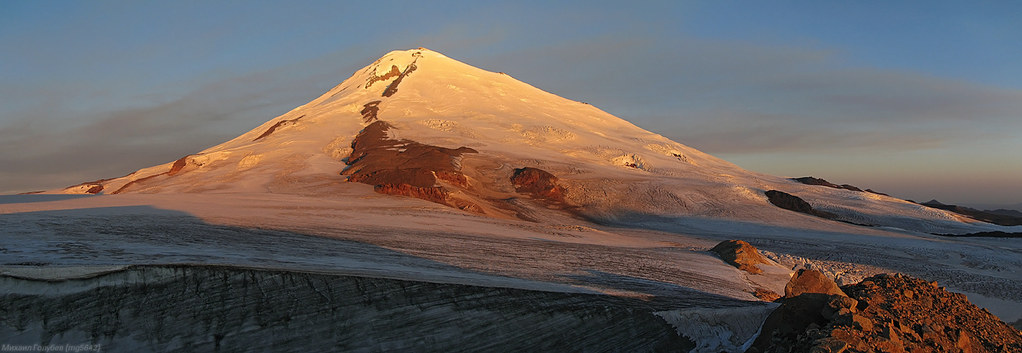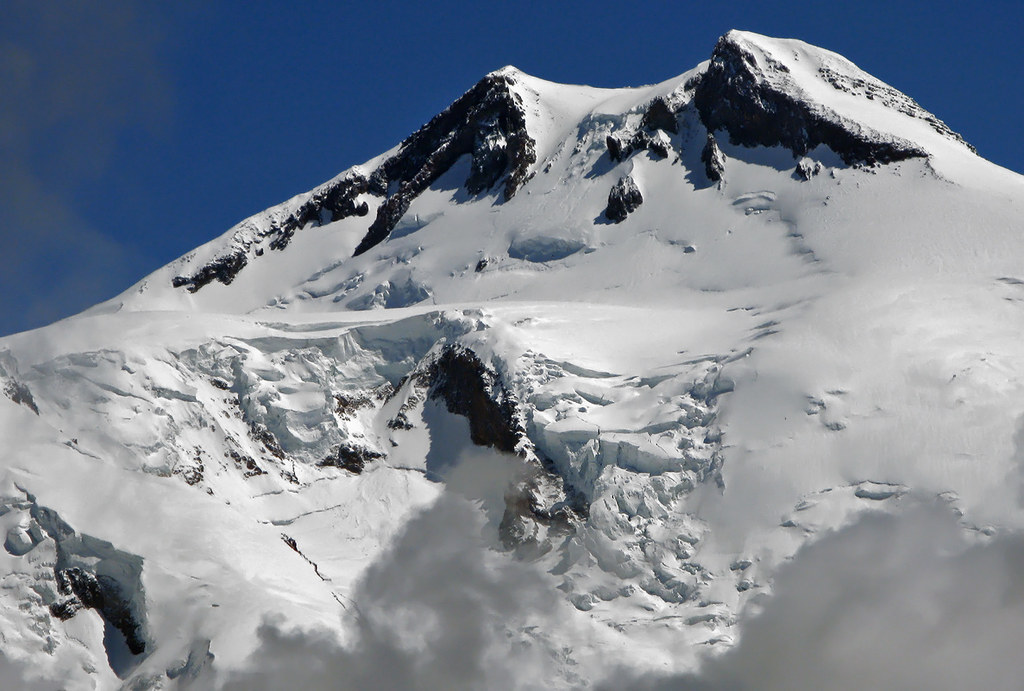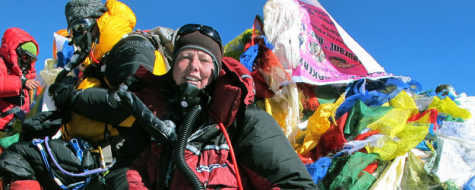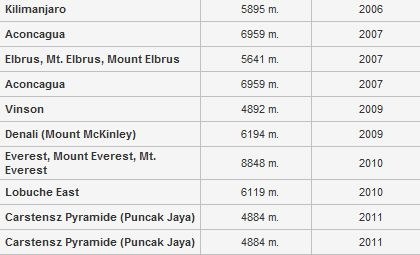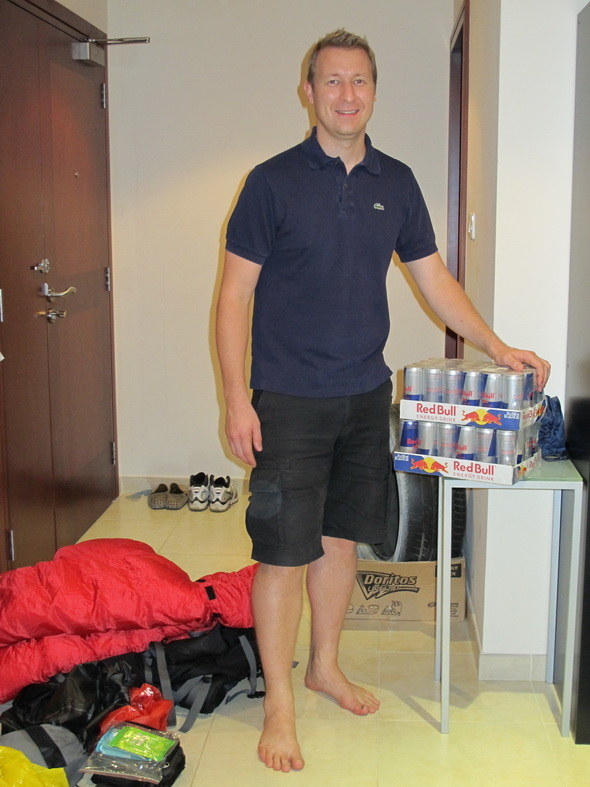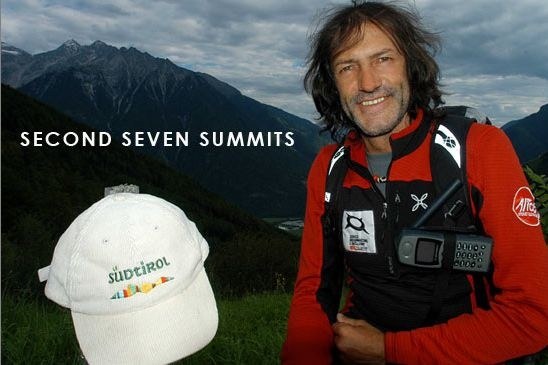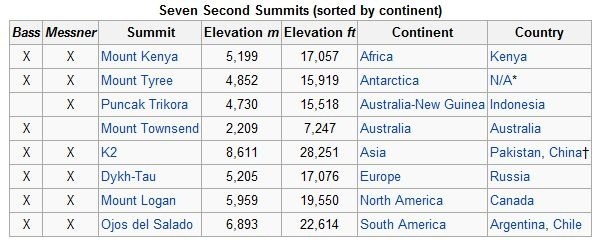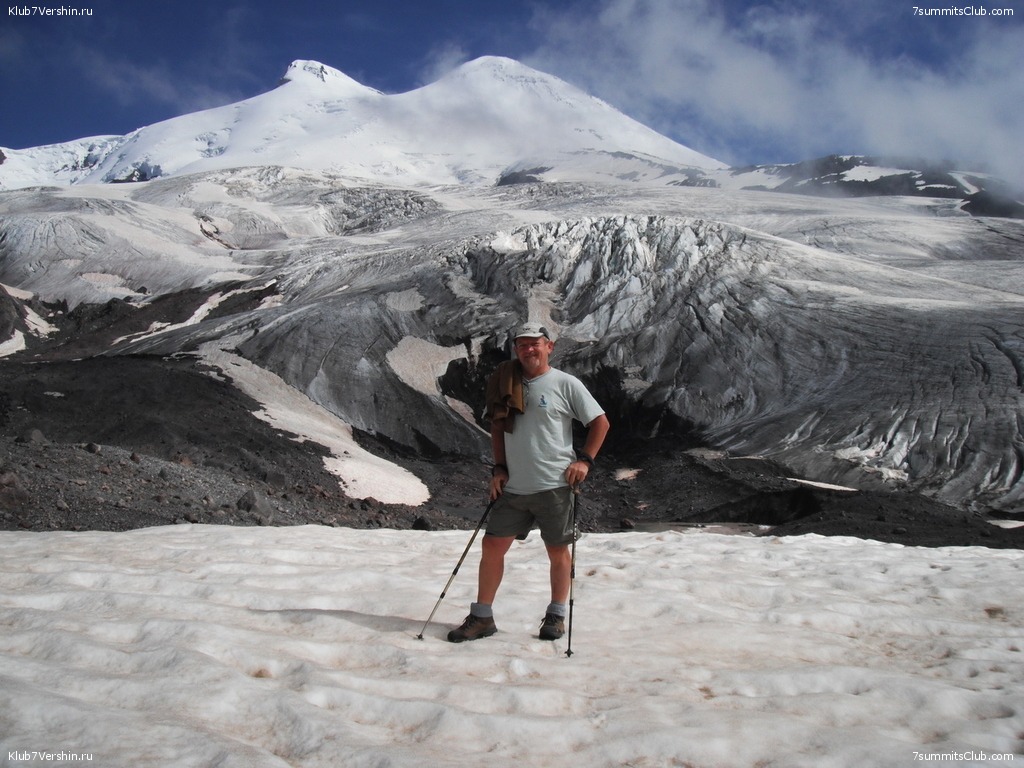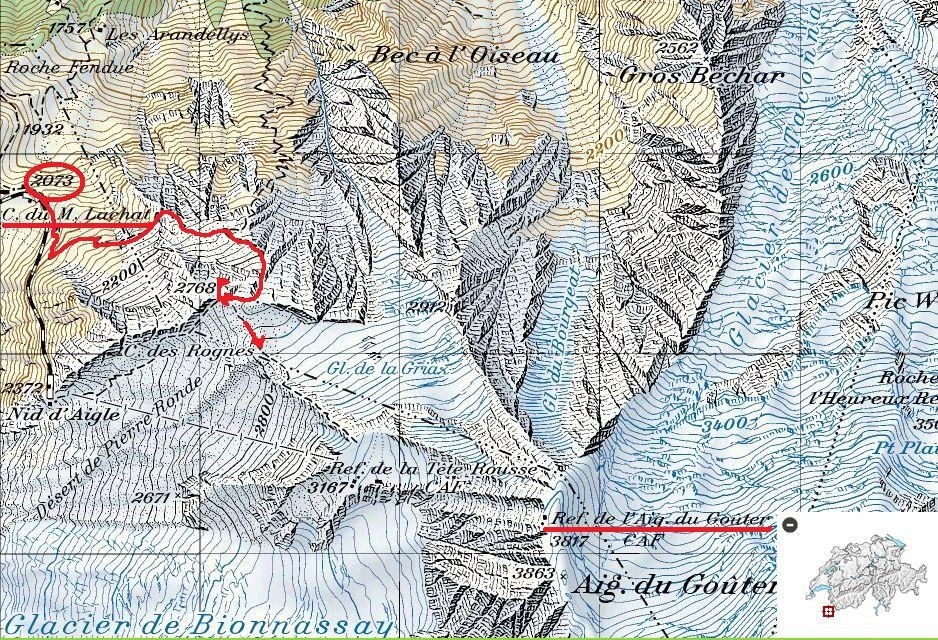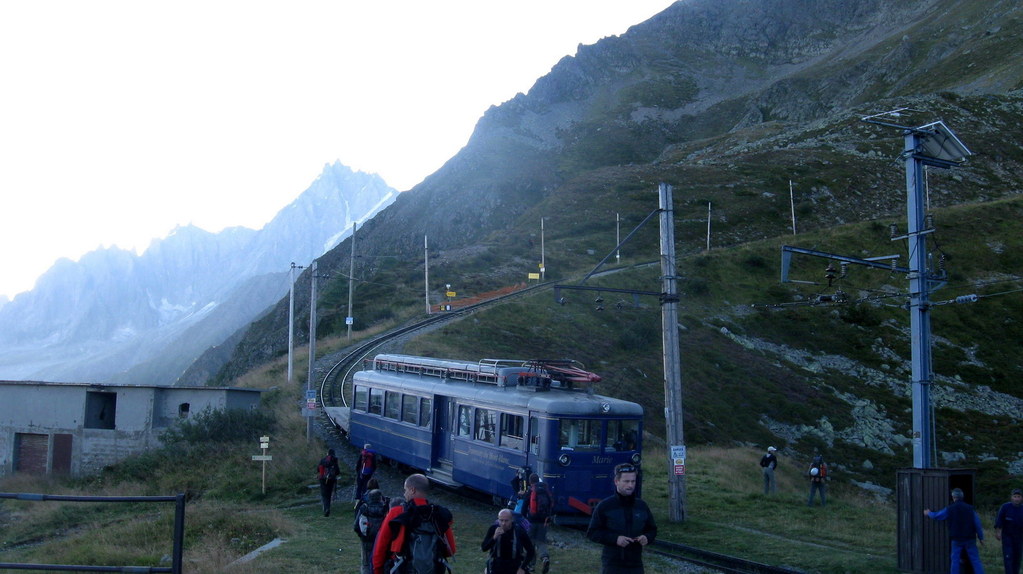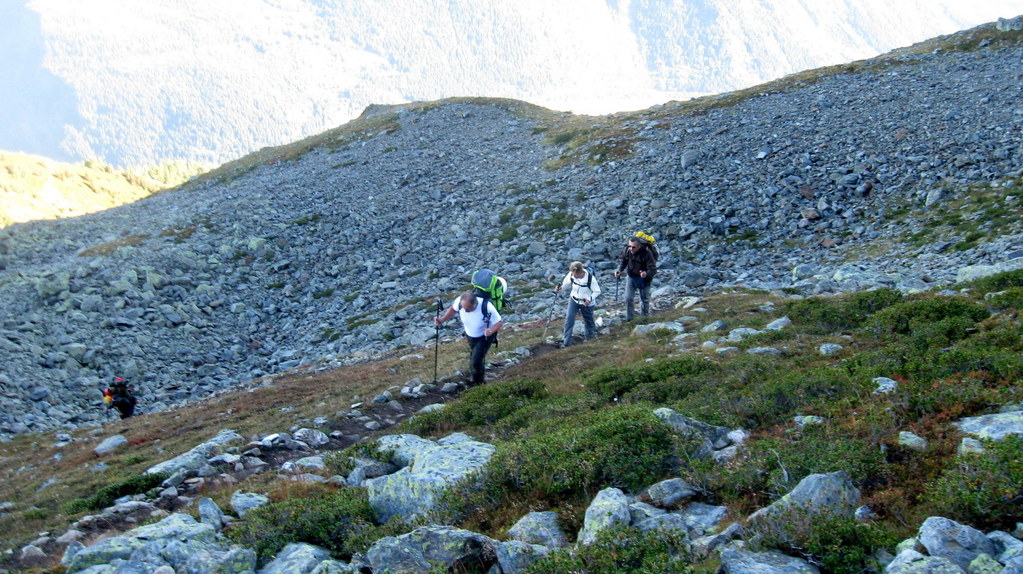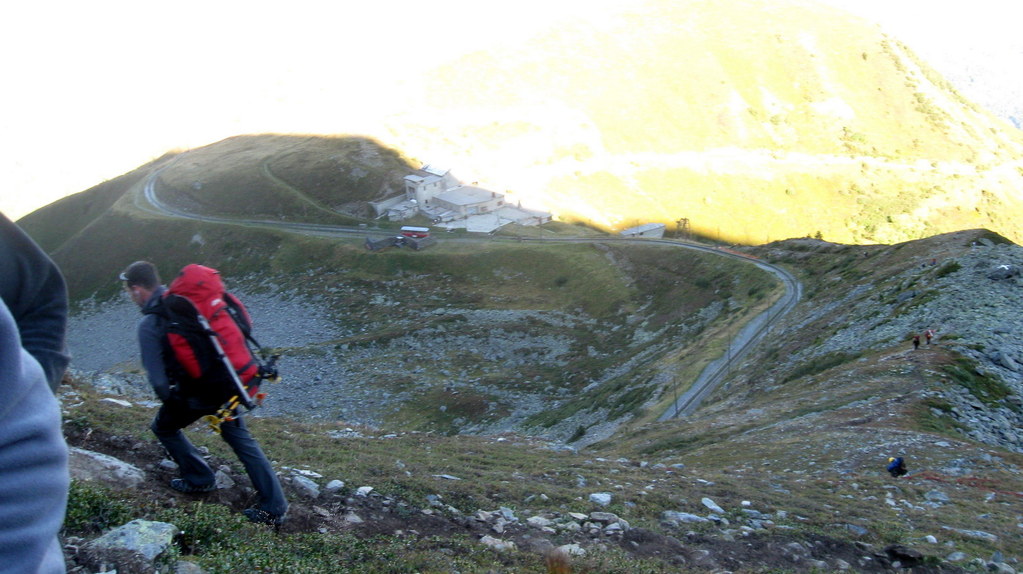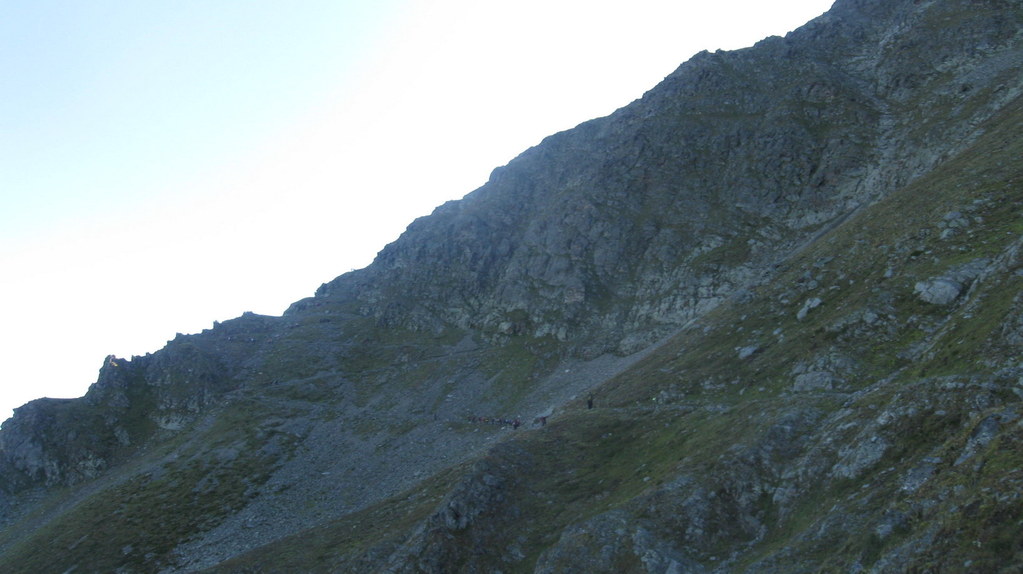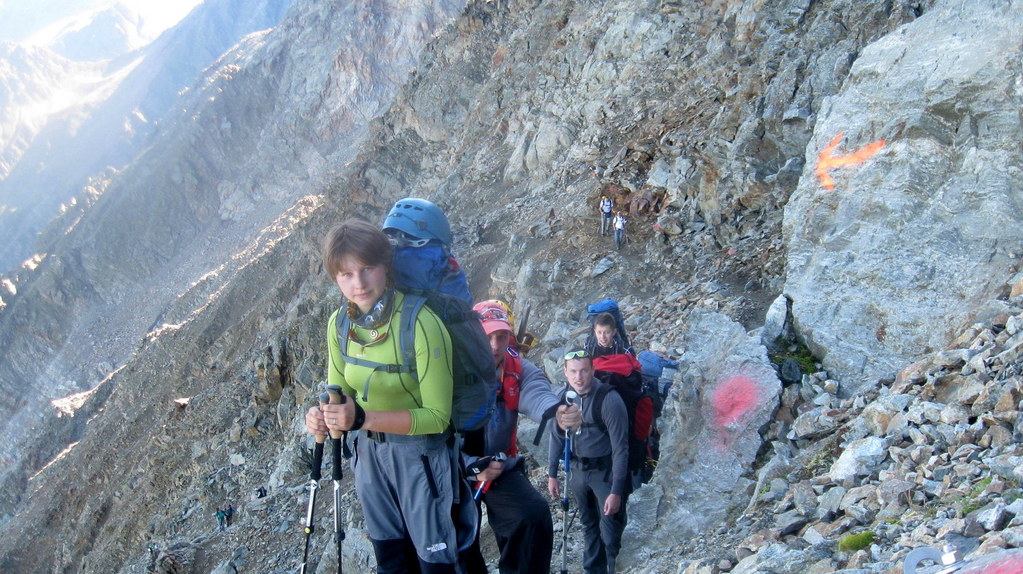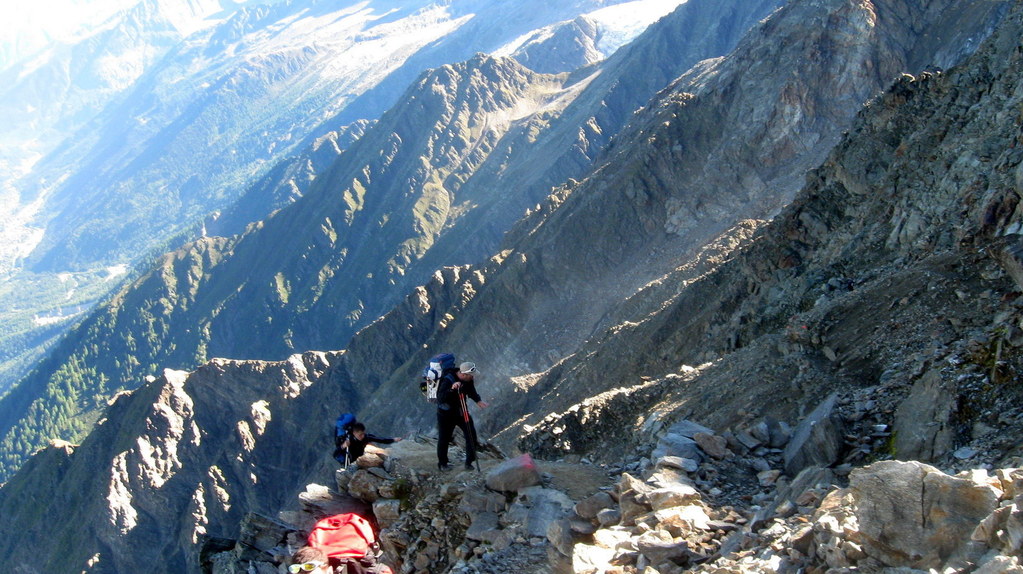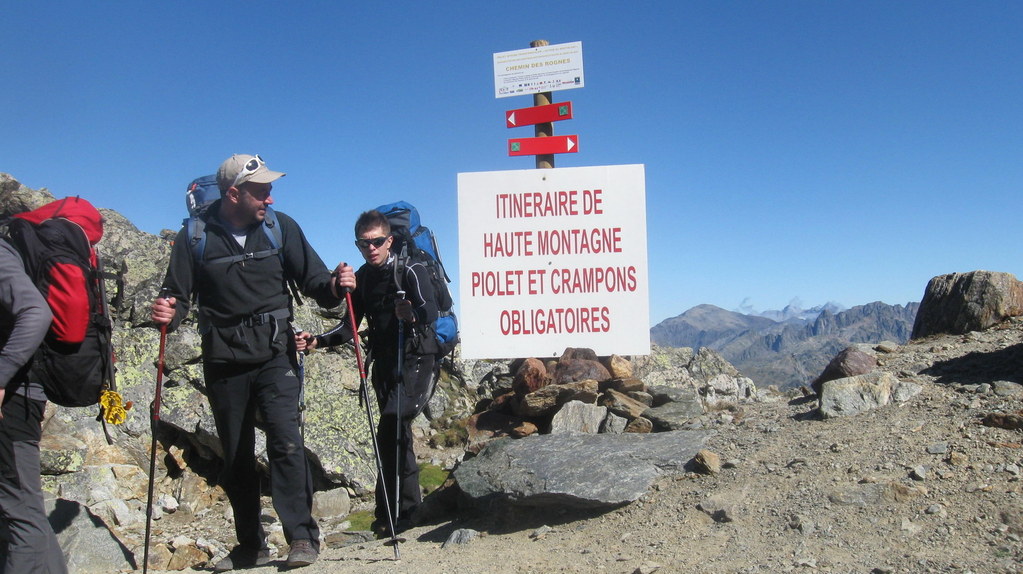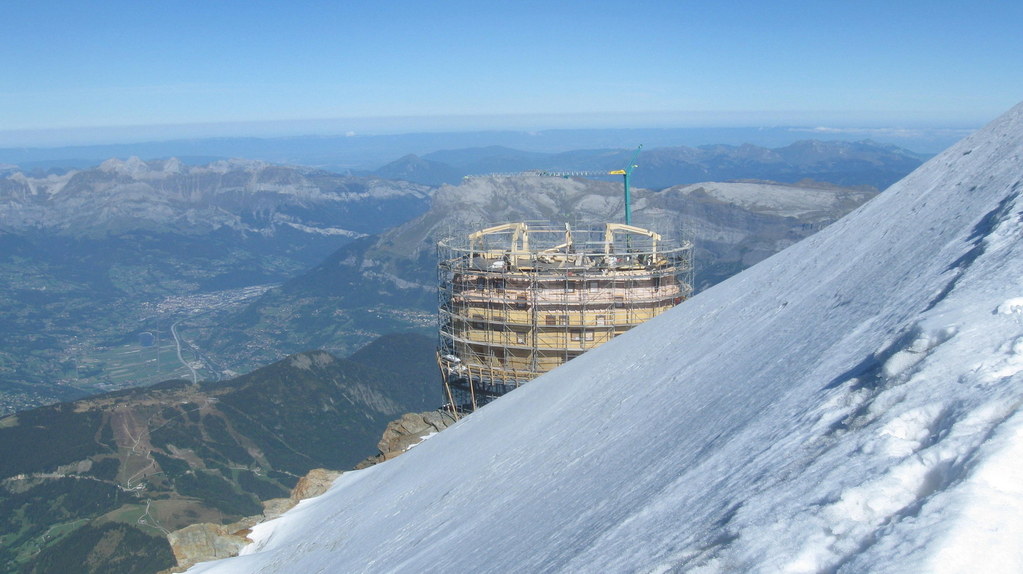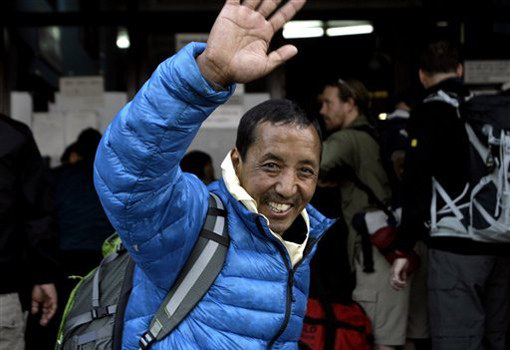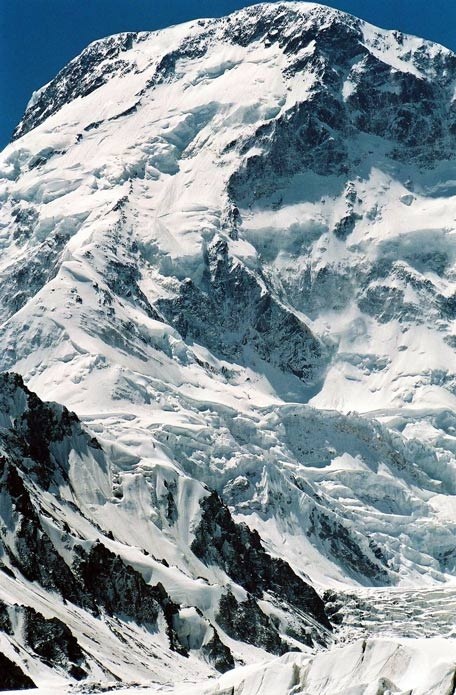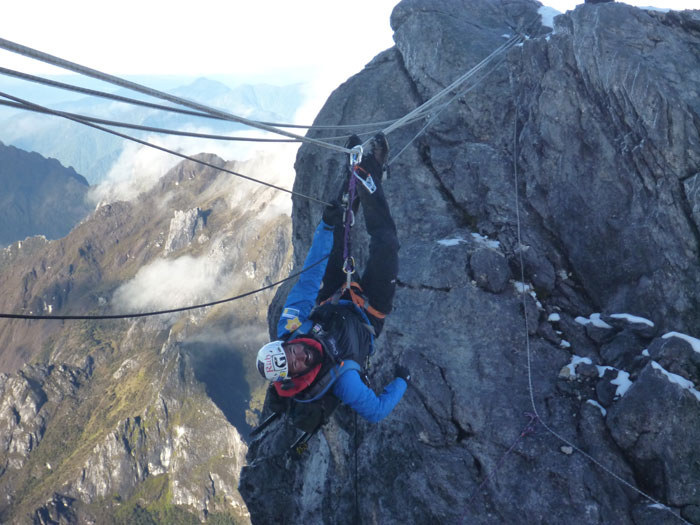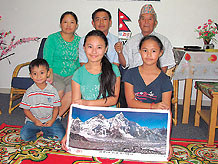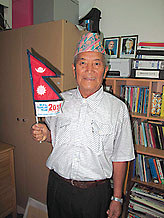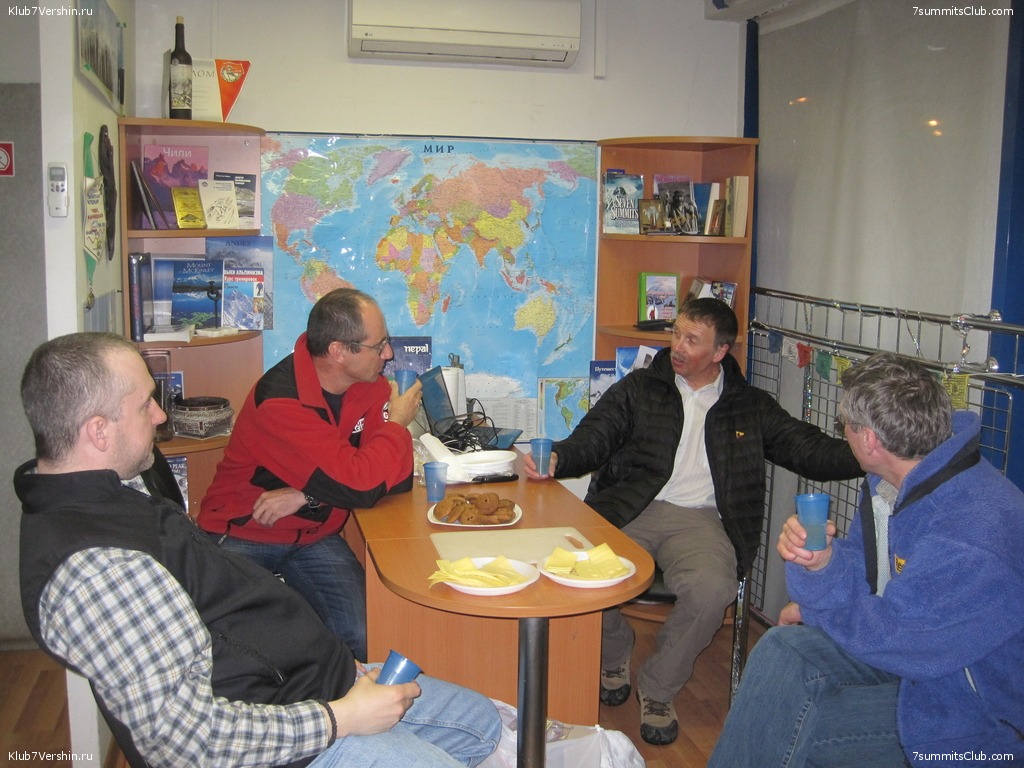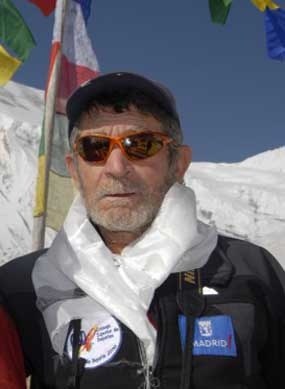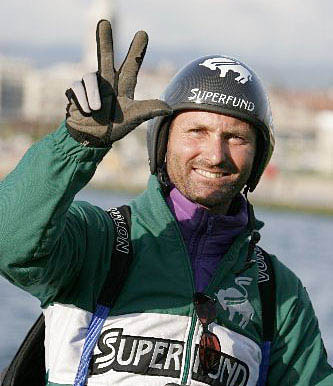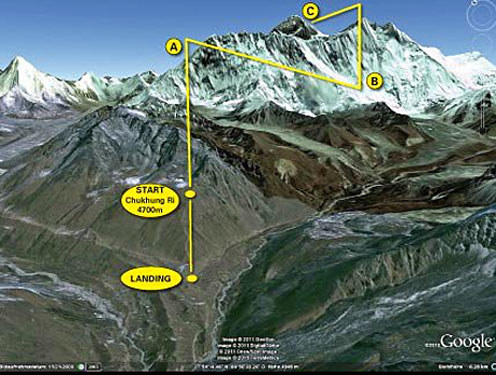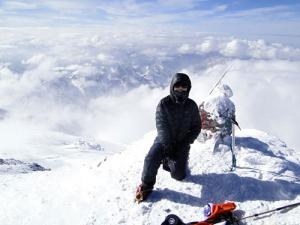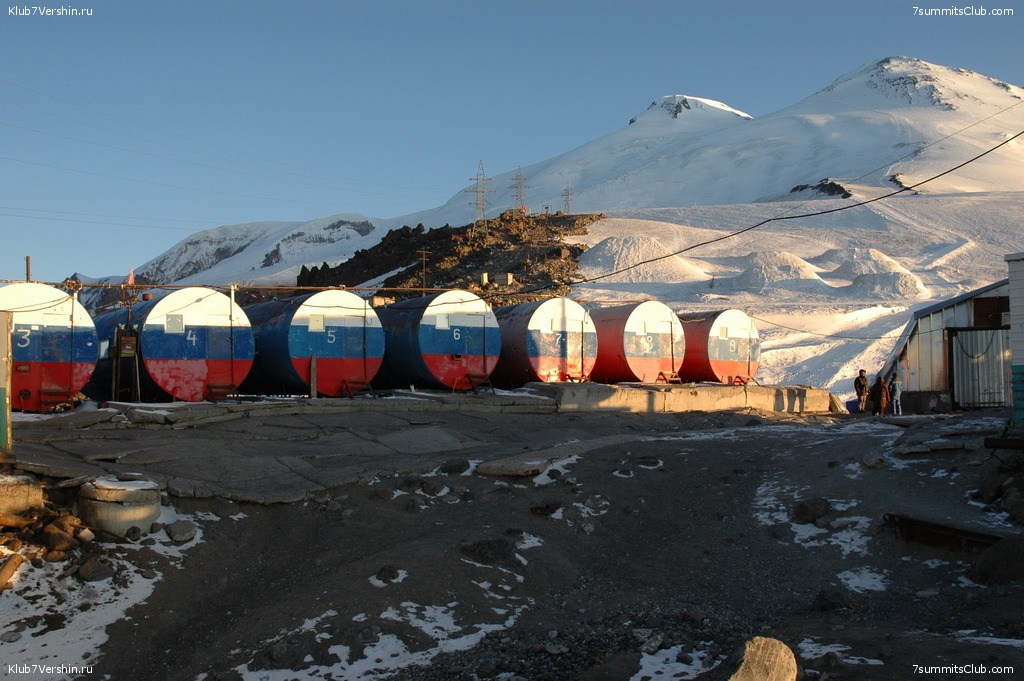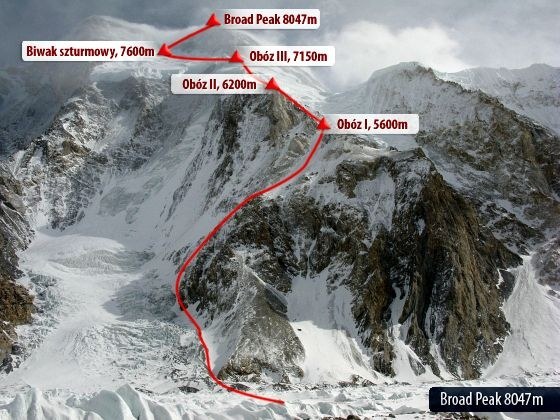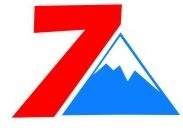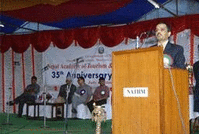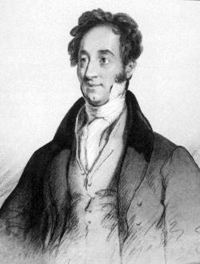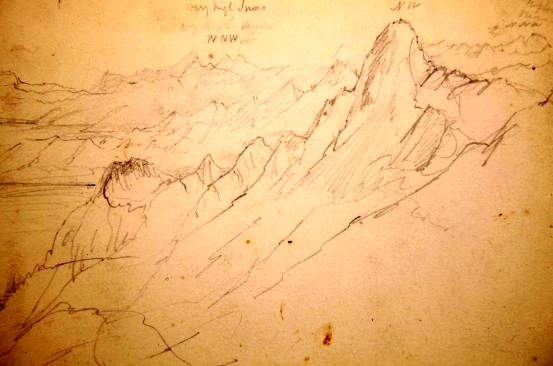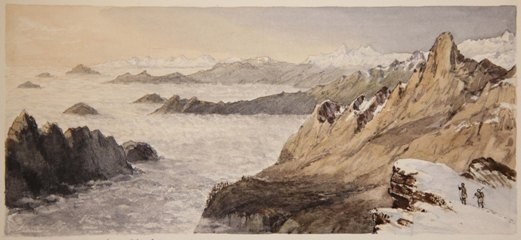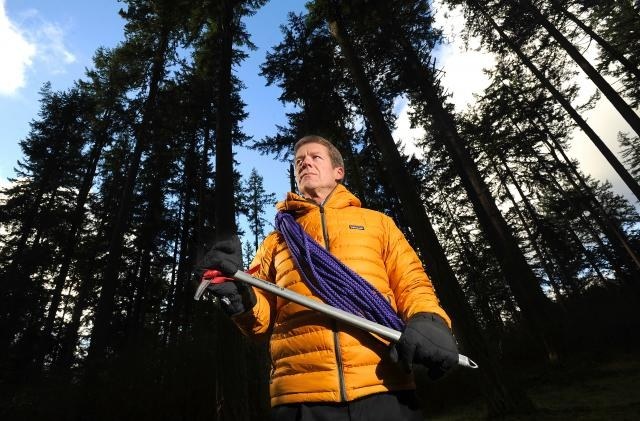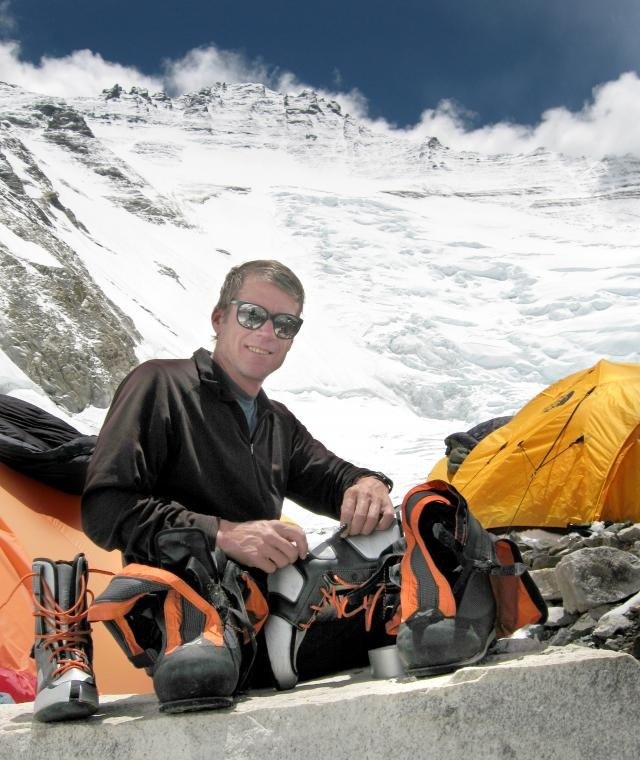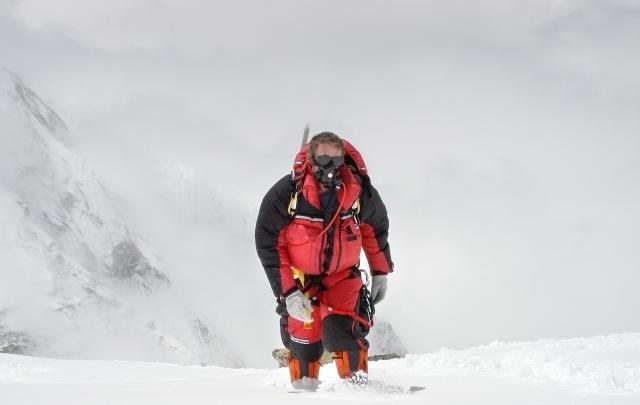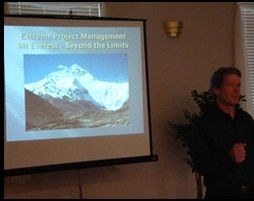World mountain's news - Page 6
Mega Tourism Resort Project in North Caucasus
Elbrus.
PR Newswire: Mega Tourism Resort Project in North Caucasus Mountains Becomes First Russian Entry to Win a Prestigious International Commercial Real Estate Development MIPIM Award HONG KONG. /PRNewswire/ -- The development company overseeing ...
PR Newswire: Mega Tourism Resort Project in North Caucasus Mountains Becomes First Russian Entry to Win a Prestigious International Commercial Real Estate Development MIPIM Award
HONG KONG. /PRNewswire/ -- The development company overseeing construction of a massive system of ski, beach and natural health spa resorts covering 50,000 sq km in the North Caucasus Mountains, stretching 1,200 km from the Caspian Sea to the Black Sea and bordering Asia, was named the first Russian winner ever of a renowned MIPIM global real estate competition.
|
Caucasus - one of the most beautiful mountains in the world. We believe in a prosperous future for the region. Most of foreign climbers visit the Mount Elbrus area only. In order to understand what else is there, just look at photos of Mikhail Golubev. Photos of Michail Golubev http://www.photosight.ru/users/192840/?pager=4
Three different view on Elbrus
|
Northern Caucasus Resorts Company (NCRC) executives will accept the award, based on innovative, technical, environmental and architectural merits, in the Central & Western Asia Futura category at the annual MIPIM Asia awards ceremony here on Nov. 16. MIPIM, short for Le Marche International des Professionnels d'Immobilier, is the premier world promoter of the international property trade. Eighty entrants from 15 countries are involved in the contest, including China, Japan, Indonesia, Taiwan, Malaysia and the UAE.
"Asia-Pacific investors seeking to diversify outside their domestic markets to mitigate risk and secure higher returns will find great opportunity within our unique plan for developing a sustainable tourism industry in the mountains on our country's southern border with Asia," said NCRC Chairman Akhmed Bilalov. "We expect many also will be attracted to the chance to participate in the first major step in a proposed new national strategy to use public-private initiatives in tourism to spur much-needed economic growth in depressed regions of the Russian Federation."
Moscow-based NCRC was established last December to drive the massive tourism project, which will create up to 300,000 new jobs. A collaboration with the federal government, the development is part of a long-term strategy to address the economic lag that underlies social tensions in the North Caucasus region. The plan includes industry, agriculture and youth vocational training reform.
With the explicit support of President Dmitri Medvedev, the federal government initially capitalized the bold undertaking with a $2.0-billion allocation for development of transportation, communications, electrical power and other infrastructure. NCRC is actively pursuing investment from financial institutions and global property developers. The ten-year project is anticipated to require up to $30 billion to complete all phases, including a cluster of five world-class skiing and five modern seaside resorts, as well as an array of health spas that will take advantage of the area's legendary healing mineral and hot springs.
To facilitate international and domestic investment, the Russian government has designated the entire 50,000-sq-km development area a special economic zone (SEZ). State guarantees will cover up to 70 percent of investments for three to ten years. The state will impose no corporate or transportation taxes for the first ten years, no land taxes for five years and no VAT tax will be applied on equipment imported into the SEZ. The project offers opportunities for foreign companies interested in hospitality, health and wellness, food and beverage, retail, real estate, logistics and warehousing industries.
"The success of this grand and important project depends on investment being thoroughly diversified and international," said Laurent Vigier, director of European and international affairs for Caisse des Depots et Consignations (CDC). The French state-owned banking group and long-term investor has signed a strategic joint venture with NCRC to provide advanced technical, legal, planning and environmental expertise to support the project. "The current outreach to the Asia-Pacific investment community is a major and critical step toward generating a broad and effective portfolio of investors for the North Caucasus," added M. Vigier, who will join NCRC executives here to present the tourism project.
About 20 French companies have already expressed interest in investing in ski lifts, hotels, airports, mountain tunnel and other construction projects. The first investment from Asia came Nov. 2 in the form of a joint venture with Korean Western Power Company to build up to five power and heating plants in the region, integrating renewable energy sources from wind and solar generation. The investment is worth approximately $1.0 billion.
NCRC's skiing resorts, the centerpiece of the overall project and including the tallest peak in Europe, Mt. Elbrus, will open between Dec. 2012 and Dec. 2015, in time for the 2014 Winter Olympic Games in the neighboring Black Sea coastal town of Sochi. Once completed, the North Caucasus ski cluster will become the world's third-largest ski destination, rivaling famed resorts located in the European Alps and the North American Rockies. With over 2.9 billion people in Russia, Europe, the Middle East and Southeast Asia living within a five-hour flight from the ski resorts, over ten million tourists of various income levels are expected to visit the mountains annually.
Company representatives will be available for one-on-one meetings with representatives of the financial, business and media communities. To schedule a business session, please contact Pavel Achikyan: +7 916 199-5313 or pavel.achikyan@gmail.com; for media interviews contact Mark D'Anastasio, +1 202 550-1235 or +7 985 999-3855, mdanastasio@emcommunicate.com
A video of the ski resort cluster project can be viewed at
For additional information about the company visit www.ncrc.ru. A press briefer can be found on the MIPIM Online Media Center site: http://www.mipim.com/en/mipim-asia/press/press-kits-and-releases/
Seven Summits. New “members of the club” and new challengers
Vinson.
The first in Denmark ... Stina Glavind became the first woman in Denmark, which managed to complete the program "Seven Summits". July 14, 2011 she went to the finishing summit of the list - Carstensz Pyramid. She is 36 years old, ...
The first in Denmark ... Stina Glavind became the first woman in Denmark, which managed to complete the program "Seven Summits". July 14, 2011 she went to the finishing summit of the list - Carstensz Pyramid. She is 36 years old, grew up and lives on the island of Bornholm, far enough away from the capital. Stina is a manager of Carlsberg, which has helped her in raising funds for trips.
On May 22, 2010. Mount Everest. "It was one of the greatest experiences of my life..."
"The purpose of life, you define yourself. I'm happy to have found a hobby, and I managed to get away from everyday life, from coffee with cream and Dancing with the Stars on TV."
Shawn Dawson: Seven Summits - the seven charitable projects
Shawn Dawson - a successful Canadian businessman. He walked up the steps a business career: starting with restaurants, then retail and real estate, then in the media business. Once, friends invited him to go with them on Mount Kilimanjaro. Traveling to Africa has changed the priorities in life of Canadian. He became closely acquainted with the organization Habitat for Humanity, a charitable group engaged in construction in poor African countries. The idea was born - to climb seven summits for charity. And the seven charitable projects add on to the project climbs. Dawson has created a special fund called the Dream Mountains, to implement their plans.
http://www.dreammountains.com/
Seven Summits program is completed and a positive balance amounted to $ 142.114. This amount has gone to seven charitable projects. But the work continues. Dawson gathers a group of track to the foot of Mount Everest, maybe he will come up with something more interesting.
Dawson completed the program climbing Carstensz, which had reached on May 4, 2011. Finnish climber Atte Miettinen was with his team, one of those who are currently studying Punto Arenas waiting for a flight to Antactica.
For the whole Finland
In fact, Veikka Gustafsson (b. 01/14/1968) represents the whole Finnish climbing. A professional mountain climber, he achieved a lot: 14 eight-thousanders without artificial oxygen, and without permanent partners. Frankly, I do not know what he miss and had climb for the seven summits yet. At least he was at Vinson before..
Veikka – the high-class climber
It is not surprising that Atte Miettinen invited Veikka to joint climbs on top of missing the "seven". Namely: Vinson, Aconcagua, McKinley and Mount Everest.
Atte lives for many years in Dubai with his wife an Englishwoman. His business projects related to information technology, and thus transcend political and geographical boundaries. Miettinen also started with two trips to Mount Kilimanjaro. Then there was Elbrus, attempt to Aconcagua and this year - Carstensz. Despite a decent amount for their own accounts, Atte had found for his project quite good sponsors. Red Bull is among the sponsors - http://sevensummits.fi/
Simone Moro and Denis Urubko in Moscow
On Saturday evening there was a meeting with the well-known climbers Simone Moro and Denis Urubko. It is the program The Speaker Series organized by The North Face in cooperation with the company of Jeep. In their plans to ...
On Saturday evening there was a meeting with the well-known climbers Simone Moro and Denis Urubko. It is the program The Speaker Series organized by The North Face in cooperation with the company of Jeep. In their plans to conduct such lectures with film demonstrations in the largest climbing centers of Europe: Turin, Barcelona, Munich, London, Moscow. It is pleasant that our capital has got to such list. The North Face has the right to be proud of the work, I mean the first winter ascension on Gasherbrum II….
Climbing is freedom !
Film Trailer
Amazing journeys always have a start and an end, watch what it took Moro, Urubko
and Richards to make history with the over 8000m winter summit of GII in Karakorum
GRAND PRIZE 2011 BANFF MOUNTAIN FILM FESTIVAL
COLD
Producer / Director: Anson Fogel
Forge Motion Pictures (USA)
Experience Gasherbrum II in the middle of a deep, dark winter, as seen from the raw, honest perspective of alpinist and photographer Cory Richards. The film deftly captures the interweaving of pain, doubt, and fear — and reveals a harrowing descent that amplifies the isolation and exposure.
“ First, we want to congratulate all the filmmakers. It’s very competitive out there and you should know that if you’re in this Festival you’re already a winner. Jurying is a tough task. I’m sure it comes as no surprise that there’s been a lot of discussion and debate throughout the week. When it came to the grand prize we all agreed. We are awed by this film: its sensitivity, humility, great storytelling and technical achievement.”
— 2011 Jury member Jacki Ochs
The seven second summits from Kammerlander
Carstensz Pyramid.
Well-known climber from the Southern Tirol, a guide and the head of climbing school Hans Kammerlander (born 1956) finishes a series of trips on cities of Austria and Germany. Public lectures and performances come to an end usually with ...
Well-known climber from the Southern Tirol, a guide and the head of climbing school Hans Kammerlander (born 1956) finishes a series of trips on cities of Austria and Germany. Public lectures and performances come to an end usually with conversations with journalists. On a traditional question on plans, the traditional answer follows: I am going to Antarctica to finish the program of "Seven Second Summits” . To made it, Kammerlander should climb only one, but really hard mount of Tyree. The second summit of Antarctica has only two successful expeditions and seven climbers on the top ….
Welcome to the Elbrus region ! CTO is canceled
Elbrus.
Counterterrorist operation (CTO) in the Elbrus and the part of the Baksan regions of Kabardino-Balkaria canceled on November 5. The head of the Kabardino-Balkaria Arsen Kanokov said that the CTO regime will be off to the beginning of winter ...
Counterterrorist operation (CTO) in the Elbrus and the part of the Baksan regions of Kabardino-Balkaria canceled on November 5. The head of the Kabardino-Balkaria Arsen Kanokov said that the CTO regime will be off to the beginning of winter ski season. The CTO regime throughout the Elbrus and the Baksan areas of Kabardino-Balkaria was introduced February 20, 2011.
«…because of continuing threat of subversive and terror acts, the republic keeps all its mountain resorts near Elbrus closed for tourists. In order to prevent possible threats to life and health of people, being guided by Article 11 of the Federal Law 'On Counteracting Terrorism', during a counterterrorist operation (CTO) regime, it was prohibited to let tourist groups and individual tourists to the ski resort near Elbrus, which is inside the CTO area,"
Welcome !
Elbrus - is invaluable pride and property ¹1 among the main miracles of Russia. The greatest mountain of Europe! One of the seventh of most magnificent highest tops that hold a firmament on different continents of our planet.
The material has been made during small travel to Caucasus and ascension to Elbrus from February till March, 2011. Despite heavy weather conditions, we still were able to embody some beautiful fragments of life of this wonderful mountain.
Enjoy viewing!
video from Vladimir Voychuk
Latest news from JSC "Northern Caucasus Resorts”
03.11.2011
THE AMENDMENTS TO THE LAW ABOUT SPECIAL ECONOMIC ZONES WILL ATTRACT PRIVATE INVESTORS TO THE NORTH CAUCASUS
JSC "Northern Caucasus Resorts” agrees with the changes to the law on special economic zones, which were coordinated with environmentalists. On the November 2 The State Duma at the second reading passed thå version of the legislation that as far as possible ensures conservation of the reserved areas and at the same time privides conditions for the effective development of the touristic zones.
Earlier, Chairman of the Board of Directors of NCR Akhmed Bilalov was categorically against submitted to the Duma edition of the bill and insisted on its correlation with the views of influential environmentalists. "The tabled version of the law is presented as dictated by the needs of the North Caucasus tourism cluster. However, some officials have tried to put into this law all their problems which they did not want to solve for many years. We will ensure, that the changes will affect only those sites that are being developed within the special economic zones for tourism and recreation under strict government control”, - said Bilalov.
During further consultations a mutually acceptable version of the bill was developed. "The new version of amendments accordes with most of the claims of environmentalists," - said in a statement of WWF Russia. "We managed to find formulations that allow the development of environmental management in the biosphere ranges - that is their primary goal, but it does not entail damaging effects as the previous bill project, - said Igor Chestin, director of WWF-Russia.
Akhmed Bilalov expressed his confidence that the accepted amendments to the law on special economic zones will not harm protected areas.and will contribute to the effective development of the North Caucasus region will attract private investors to the tourism projects in the south of Russia.
"The bill provides tax deduction for residents of tourist-recreational SEZ for a period up to 2023, greatly simplifies the form of land use and technical regulations. The preferences, which are established by the bill are extremely attractive for investors ", - said Bilalov. He also reminded that the project of the North Caucasus tourism cluster will create in the region more than 300 thousand new jobs.
*** The project of the tourism cluster in the south of Russia in 2011-2020 involves the construction of five world-class mountain resorts: Lagonaki (Krasnodar Territory, the Republic of Adygea), Arkhyz (Karachay-Cherkessia), Elbrus-Bezengi (Kabardino-Balkaria), Mamison (Republic of North Ossetia - Alania), Matlas (Republic of Dagestan). The planned total length of ski runs will be almost 900 km and they will have 179 ski lifts. The hotels with varying comfort levels will accommodate 89 000 people. Daily capacity of the resorts will reach 150 500 people and each year the North Caucasus tourist cluster will be visited by 5 to 10 million tourists.
The total cost of the ski project is estimated at 451 billion rubles. The project is financed by a public-private partnership. Government invests via "NCR" corporation 60 billion in transport and utilities infrastructure, private business is financing the facilities of resort infrastructure.
The Russian government is considering the inclusion of the coastal area of the Caspian Sea (Dagestan), Caucasus Mineral Waters (Stavropol Territory) and the Republic of Ingushetia to the North Caucasus tourism cluster project.
Soon South Elbrus will be open for all
Elbrus.
The southern slopes of Mount Elbrus will be open to all visitors, probably from 1th December. Counter-terrorist operation is not canceled and may be even remain. However, no special restrictions on the visit will be exist. ...
The southern slopes of Mount Elbrus will be open to all visitors, probably from 1th December. Counter-terrorist operation is not canceled and may be even remain. However, no special restrictions on the visit will be exist. Cable cars, damaged by terrorists, are fully restored. Hotels are preparing to meet skiers. In the spring we are waiting for ski tourists, then the race in Elbrus. We hope that next summer will be in normal.
Elbrus area qualifies as a backup venue for ski competitions of the Olympic Games in 2014. Authority promise a beginning large-scale construction works in nearest future.
Fresh pictures from the Elbrus Regin (from risk.ru)
Mount Cheget - an extreme skiers paradize
Majestic Donguz-Orun
Meanwhile, Olympic Organizing Committee announced plans for the torch relay....
Author: Stefan Korshak.
Relay runners will for the first time carry the Olympic flame to the North Pole, Russian organizers of the 2014 Winter Games said on Tuesday.
Dmitry Chernyshenko. Archive picture: Yuri Kochetkov
"The most ambitous relay race" ever attempted with an Olympic flame will also take the fire into space and across a 5,000 metre mountain, Dmitry Chernyshenko, head of Russia's Olympic committee, told the news agency Itar-Tass.
A trip for the flame into space, possibly involving the International Space Station (ISS), will be a major challenge, as will be taking the fire to the summit of the 5,642-metre-high Mount Elbrus, Russia's tallest mountain and the highest peak in Europe, Chernyshenko said.
The Olympic flame is scheduled to arrive in Moscow from Athens in October 2013 and then to travel in relays just under 9,000 kilometres to the Pacific port Vladivostok.
In the remaining 123 days until the Olympic Games, running from February 7 to 23, the flame and its carriers will follow a route of more than 40,000km through all 83 major cities in Russia's regions, Chernyshenko said.
More than 30,000 volunteers will participate in the flame relay, he said.
The 22nd Winter Olympic games are scheduled to be held from February 7 to 23, 2014, in the Black Sea port city Sochi and in the adjacent Caucasian mountain resort Krasnaya Polyana.
Independent, Ski visit into Krasnaya Polana
Mont Blanc news, the classic route will be longer
Nid d’Aigle should re-open only in spring 2013. Following this summers closure of the last segment up to the Nid d’Aigle on the Tramway du Mont Blanc, it has now been announced that this stretch of the line will be remain closed ...
Nid d’Aigle should re-open only in spring 2013. Following this summers closure of the last segment up to the Nid d’Aigle on the Tramway du Mont Blanc, it has now been announced that this stretch of the line will be remain closed until spring 2013.
Important safety work needs to be carried out to protect the track whilst new tracks are to be laid. With this in mind, the final leg of the tram track will not be open to the public.
Mountaineers planning to climb Mont Blanc will be able to carry on to Mont Lachat, between Bellevue and Nid d’Aigle. The Tete Rousse should still be accessible on foot via the Chemin des Rognes and Les Ruines, allowing alpinists a safer route around the danger zone.
Ueli Steck successful on Shisha Pangma....
Everest.
Swiss alpinist Ueli Steck (34) has successfully started into his ninth Himalaya-Expedition. He climbed in 10 1/2 hours and alone the over 2000 meter high south-west-face of Shisha Pangma, with its 8027 meters of altitude the 14th highest ...
Swiss alpinist Ueli Steck (34) has successfully started into his ninth Himalaya-Expedition. He climbed in 10 1/2 hours and alone the over 2000 meter high south-west-face of Shisha Pangma, with its 8027 meters of altitude the 14th highest mountain in the world.
Ueli Steck has successfully implemented his idea "Speed" from the Alps into the Himalaya: to climb big difficulties in big altitudes and this as fast as possible.
Ueli Steck acclimatised himself one month in the Khumbu Valley on the south side of Mount Everest (Nepal) and he moved on from Kathmandu to Shisha Pangma on April 10, 2011.
Shisha Pangma is the only peak over 8000 meters which lies completely in Tibet (China). Two days lasted the trek to the basecamp (5250 meters). After another two days he went with his Canadian partner Don Bowie to the advanced basecamp (5800 meters) at the foot of the wall. Bowie felt not acclimtazed enough and in poor health so that he decided not to go for an attempt. Because of the favourable weather forecast Bowie agreed with Steck, that Ueli should go for an attempt alone.
On Saturday at 22.30 hours Ueli Steck started to climb. After 10 1/2 hours he summitted with the 2000 meter high south-west-face his third summit over 8000 meters and was less than 20 hours later back to basecamp.
Ueli Steck and Don Bowie will now continue their expedition. They will try to climb together Cho Oyu from the north side. Cho Oyu is with 8201 meters the six highest mountain in the world.
Eco Everest Expedition Spring 2011 press release
Everest.
World record holder Apa Sherpa going to the summit of Mt. Everest for the 21st time. Having succeeded in the Eco Everest Expedition 2008, 2009 and 2010, the Eco Everest Expedition 2011 is heading on 6th April towards Mt. Everest Base Camp ...
World record holder Apa Sherpa going to the summit of Mt. Everest for the 21st time.
Having succeeded in the Eco Everest Expedition 2008, 2009 and 2010, the Eco Everest Expedition 2011 is heading on 6th April towards Mt. Everest Base Camp from Kathmandu under the leadership of Dawa Steven Sherpa , the Managing Director of Asian Trekking, Nepal and Apa Sherpa, World Record holder of 20 ascents of Mt. Everest, as a Climbing Leader of the Expedition.
Dawa Steven Sherpa, organizer of Eco Everest Expedition talked about this year’s Eco Everest Expedition. “This Expedition is focused on climbing in an Eco-sensitive manner to keep Everest clean and collect garbage, debris and waste left by past expedition groups. The collected garbage will be brought down to the Base Camp by members of the clean up team for proper disposal. The Eco Expedition would again be using the alternative energy solutions like the parabolic solar cookers, solar lightings and the ultraviolet light pens for water purification,” he said.
Since 2008, the Eco Everest Expeditions have collected and brought off the mountain nearly 12,000 kgs of garbage and over 300 kgs of human waste produced by Eco Everest Expedition. Also four died bodies recovered and brought down from the mountain for a dignified burial.
The Eco Everest Expedition 2011 plans again to collect and bring down garbage from high altitude . His team targets to bring down 4000 kilograms of garbage from the mountain like the previous Eco Everest Expedition on the basis of "Cash for Trash" program which offers 1 hundred rupees for one kilo garbage brought down to Base Camp. Furthermore, together with Japanese Mt.Everest Summiteer and Environmentalist Ken Noguchi, the expedition aims to bring down another 1 thousand kilos of garbage between Camp II and the Summit. The aim is to clean up a total of 5000 Kilograms of garbage from Mt. Everest this year.
At Base Camp, the collected garbage will be sorted into biodegradable and burnable which will be handed over to the Sagarmatha or Everest Pollution Control Committee (SPCC), an NGO based in the Everest region. The non-degradable and non-burnable garbage will be brought to storage in Asian Trekking's warehouse in Khumjung village.
The main sponsors of Eco Everest Expedition 2011 garbage collection program are Asian Trekking Pvt. Ltd and The North Face.
Dawa Steven Sherpa and his Eco Everest Expedition team are continuing this initiative to create awareness among the local people and among the climbers to help keep Mt.Everest and the Himalayan Mountains clean. Eco Everest Expeditions have been taking a message to "stop climate change" as it destroys the Himalayan environment and threatening the lives and livelihoods of the mountain communities.
ECO EVEREST EXPEDITION SPRING 2011
There are 23 Climbing member consisting of 10 Americans, 6 Indians, 3 Brazilians, 1 Japanese, 1 Spanish,1 Mexican and 1 Swiss. Eco Everest Expedition's advance team staffs are already at Base Camp building platform sites for tents. We are using 124 sleeping tents for members and staffs, 7 big dinning tents at BC and Camp II, 5 kitchen tents, 2 storage tents, 4 shower tents, 1 communication tent and 6 toilet tents for this expedition.
To manage this huge expedition is a very professional task, which will be done by Dawa Steven Sherpa (Managing Director of Asian Trekking and My Son) who has the experience of handing a huge team like this. This year also, Apa Sherpa will be our climbing leader, whose world record of 20 times summit of Mt. Everest will be called upon to manage the climbing schedules of all our members. Apa will be climbing again for a new record again, 21st time! To look after the logistics and Sherpas, our senior Sirdar Naga Dorje will be managing a team of 40 climbing Sherpas, including 2 other Sirdars.
At the base camp we have Mr. Lee Bennett (better known as Wiggy), who is our Base Camp Manager and Communication In-charge. Wiggy is a qualified mountain guide and was a Communication Engineer in the Royal Navy (UK) until he retired last year. Our head cook Birbal will be providing a varied menu for various nationalities to suit their plates. Birbal has a team of 11 cooks and kitchen helpers to make sure all the climbers are fed well.
Ms. Premlata Agrawal, Ms. Sunita Singh, Mr. Narendra Singh and their Sherpas flew to Lukla on 29th of March, heading for a Pre-Everest climb on Island Peak for acclimatization before joining the main team members at Everest Base Camp. The first expedition briefing of Asian Trekking's Eco Everest Expedition Spring 2011 was held on 28th March. The briefing was given by Expedition Leader Dawa Steven Sherpa, senior Sirdar Nanga Dorje Sherpa and Ted Atkin (Inventor of Top Out Oxygen Mask) and attended by the first group of expedition member Ms.Premlata Agrawal, Ms.Sunita Singh, Mr. Narendra Singh and Pawan Grewal and their Sherpa Team members.
The Eco Everest Expedition was organized successfully for three consecutive years (2008, 2009 and 2010) to create international awareness about the impact of Climate Change in the Himalayas and the lives of the mountain communities. That is why the expedition uses highly successful alternative energy solutions like the parabolic solar cookers, solar energies for lighting and the SteriPENs for water purification and also encourages other expedition teams to use them.
Besides this, Eco Everest Expedition also focuses on cleaning of Mt. Everest and it seems somehow successful in this task. Since 2008 until today Eco Everest Expedition has brought down more than 12,000 kilos of previous expedition garbage and more than 300 kilos of human waste produced by Eco Everest Expedition from Mt. Everest for proper disposal. Also four died bodies recovered and brought down from the mountain for a dignified burial and funeral.
Two groups plan to open the most difficult route to Pobeda Peak
Now Denis Urubko went to Italy to climb rocks, to pedal mpuntainbike along the Albino valleys and training for upcoming summer season. After the first winter ascent to the summit above 8000 meters in Karakoram - on Gasherbrum-2, Denis and ...
Now Denis Urubko went to Italy to climb rocks, to pedal mpuntainbike along the Albino valleys and training for upcoming summer season. After the first winter ascent to the summit above 8000 meters in Karakoram - on Gasherbrum-2, Denis and his wife had visited his parents, who live on Sakhalin Island.
Upcoming summer Denis and his friend Boris Dedeshko plan to climb Pobeda Peak (7439 m) along a new route. In 1982, a team of army mountaineers from Kazakhstan led by Vlad Smirnov climbed the North Face along a winding route, which is shaped like the letter S. They named it “Dollar. " Urubko and Dedeshko will try to climb by a new, direct route on this part of the face. A group of young climbers from Kazakhstan and Kyrgyzstan, who train under the guidance of Urubko will climb at this time the classic route on Pobeda Peak from the West. Italian climber Tamara Lunger plans to join this team.
Denis wants to start at the beginning of July climbing new routes on Przewalski Peak (6400 m) and Grudzinski Peak (6350 m). Then climb Khan-Tengri from the North and attempt a new route on Pobeda. “In the meantime, I'm in Italy, and here I was greeted as a hero. Sometimes it even becomes uncomfortable. Well, who am I for these guys from the valleys of Lombardy? Here, I am always known, invited, embraced, interviewing people with great respect for climbs that I did, congratulated on our victory in winter on Gasherbrum ... just brought to tears. "
Our friend Gleb Sokolov have similar plans. This famous Russian climber from Novosibirsk goes now to Kanchenjunga He also intends to open new route on Pobeda via "Dollar". Two his friends Vitaly Gorelik and Alexander Kirikov will be in his team. It should also be a direct route.
Let's see who are lucky, we hope - both teams.
News from the Seven Summits
Everest.
Carstensz Pyramid FORMER Gwent rugby star Richard Parks told of an “adventurous and mysterious” trek as he climbed the highest mountain in Australasia and completed the first half of his global expedition ...
Carstensz Pyramid
FORMER Gwent rugby star Richard Parks told of an “adventurous and mysterious” trek as he climbed the highest mountain in Australasia and completed the first half of his global expedition challenge. The ex-Dragons and Wales player reached the summit of the 4,884 metre high Carstenz Pyramid in West Papua, Indonesia on Wednesday, local time.
This followed a seven-day trek and climb and represents the completion of the fifth of nine legs.
It means Parks is still on track to become the first person to climb the highest summit on each of the world's seven continents and venture to the north and south poles in seven months.
He described the climb, starting from dense tropical jungle, as "the most elusive, mysterious and adventurous of the seven summits." While it has the lowest summit altitude, it is the most technically challenging as it involves difficult scrambling, rock climbing and abseiling.
Parks also trekked through jungle to base camp, which involved walking through rivers, mud and torrential rain in extreme humidity. There were also concerns that the Japanese Tsunami might hit West Papua and cause delays, however, the island remained unaffected.
Parks has now successfully completed The South Pole, Mount Vinson in Antarctica, Aconcagua in South America, Africa’s Kilimanjaro and now Australasia’s Carstensz Pyramid. Next up is the North Pole.
He is hoping to raise £1 million for Marie Curie Cancer. Follow him at 737challenge.com.
Mount Everest
The Guinness World Record holder as the oldest Mount Everest climber, is currently in Brunei Darussalam as the Ambassador of Visit Nepal Year 2011 to promote Nepal tourism in Brunei Darussalam.
Mr Min Bahadur Sherchan broke the world record by reaching the summit of Mount Everest in 2008 at the age of 77 years.
He has been in Brunei since March 18 and has visited Kuala Lumpur and his next destination is Singapore.
While in Brunei, the now 80-yearold Mr Min Bahadru Sherchan, has participated in various activities carried out by Gurkha members at the British Army Camp in Seria and had special sessions to promote Nepal tourism.
In an interview with the Borneo Bulletin, Mr Min Bahadur Sherchan said he has been appointed as Ambassador of Visit Nepal 2011 by the Nepal Tourism Secretariat.
It is to lure travellers from South and North Asia like Hong Kong, Malaysia, Singapore, It is to lure travellers from South and North Asia like Hong Kong, Malaysia, Singapore, Brunei, Japan, India and other European countries such as United Kingdom and United States to Nepal.
Mr Min Bahadur Sherchan (right) with his family members while visiting the Gurkha Army Camp in Seria.
The oldest Mount Everest climber said despite his age, he plans to ascend Mount Everest next year to break his own record as the oldest climber.
He extend an invitation to Bruneians to travel to Nepal as both countries have good relations and to mark the Visit Nepal Year 2011, adventurous activities will be organised such as track events, mount climbing and visit to remote areas.
He said Nepal has natural beauty and the Nepalese are warm and friendly. Nepal is also renowned for its culinary treats and affordable shopping as well as rich in culture and tradition.
During the sharing session, he said that he had to wait until the age of 77 to climb Mount Everest due to financial limitations. He added that he had to spend over US$25,000 to achieve his dream and as a Nepali, he aimed to compete with other world record holders who are mostly foreigners.
Recollecting his achievements, he said, he has climbed three mountains in Nepal. When he was 72, he walked a distance of 1,028 kilometres from the North to West of Nepal in 20 days and at the age of 73 he walked for seven days from East to South Nepal while enduring the blistering heat and snowy weather.
He said age is no barrier and his secret to staying fit is practising healthy eating
. He does not consume rice and eats a little portion of meat but large quantities of vegetables and traditional Nepalese food `Kodo'. He also complements his healthy diet with a 30-minute morning exercise and yoga every day.
Spring season in the Himalayas, highlights...
Everest.
We look at the Himalayas from south to north. Kanchenjunga. The team collected by Alexey Bolotov will try to climb this giant mountain. It consists of two top Russian high altitude climbers - Nikolay Totmyanin and ...
We look at the Himalayas from south to north. Kanchenjunga. The team collected by Alexey Bolotov will try to climb this giant mountain. It consists of two top Russian high altitude climbers - Nikolay Totmyanin and Gleb Sokolov. As well as our close friend, president of Mountaineering Federation of Azerbaijan, the snow leopard and the climber at the Seven Peaks Israfil Ashurly. Together with them - Pole Paul Michalski, Romanian Alex Gavan and Italians Mario Panzeri and Antonello Martinez. And also a group of Nepalese climbers. If successful Sherpa Mingma will be the first in the country climbed 14 eight-thousanders ...
In our office: Mikhail Yarin, Alex Abramov, Gleb Sokolov and Pavel Shabalin
Makalu. Polish woman climber Kinga Baranovska, which goes to his eight eighåt-thousanders, will be there a major star ... Slovak Peter Hamor plans, high-speed solo climb without oxygen. For acclimatization he plans to climb Lobuche East and Pumori.
Lhotse. Carlos Soria, 72-year-old Spanish climber intends to climb its 10 th eight-.thousander. In the company with him will climb Carlos Pauner and Juan Oiarzabal, who has now 24 climbs on eight thousanders (overall record). Austrian paragliding Mike Kueng wants to flight over the summit ridge (8500 m), starting from the south. On account of this 42-year old athlete is a lot of records, including a flight at an altitude of 10,100 meters. But the goal is very difficult: from the bottom up in the Himalayas nobody could rise above 7300 m yet. Austrian already is flying in the vicinity of Namche Bazaar, as part of his great expedition "paratrekkers.
Soria (left), Kueng and below - the planned route record
On Everest should be lively as usual ...
In addition to numerous commercial expeditions, many people will try to speak own word on the slopes of tallest peak of the planet.
In the focus - Basque woman climber Edurne Pasaban, which tries to climb the highest peak without the aid of artificial oxygen. If successful, all 14 eight she would have "made" without oxygen. Also will try a clean, oxygen-free ascent a 35-year-old Australian climber Allie Pepper .. And men… once again going to climb without oxygen Englishman David Tait. Before that he planned to climb a new route on Lhotse. Mexican David Liano is back to his project climb Everest from both sides during the season. Without oxygen, and one day plans to go to the summit an Ecuadorian Ramiro Tesalema. Brazilian Rodrigo Raineri announced his intention to descend from the top of a glider.
Allie Pepper - after Cho Oyu climbs Everest without oxygen
Sherpas go for at least 3 record. Famous Apa go to the top once again.
Pemba Dorji plans for a day to visit both Everest and Lhotse. His brothers dragged to the top of the world's tent - they plan to stay at an altitude of 8848 meters over 24 hours.
On Cho-Oyu the most interesting fact is that refusal to participate in the expedition Japanese Hiro Takeuchi. In solidarity with the victims of the catastrophic earthquake compatriots. Takeuchi - the first real contender for the 14 eight-thousanders from the country which was a quarter-century was among the leaders of Himalayan mountaineering. He remained only two: Cho Oyu and Dhaulagiri
Sumo wrestler Kelly Gneiting finishes LA marathon and plan to climb Everest
Everest.
Gneiting, shown during a 2004 competition, beat his previous time by two hours A 400lb American sumo wrestler hopes to become certified as the heaviest man to finish a marathon after competing the Los Angeles race in nearly 10 hours. ...
Gneiting, shown during a 2004 competition, beat his previous time by two hours
A 400lb American sumo wrestler hopes to become certified as the heaviest man to finish a marathon after competing the Los Angeles race in nearly 10 hours.
Kelly Gneiting, who was the last of 11,891 men to cross the Los Angeles marathon finish line on Sunday, described the race as "pure hell".
Gneiting walked the last 18 miles, suffering through painful blisters, but beat his 2008 time by two hours.
He has won three US sumo titles beginning in 2005.
"I did it, but it was hell," Gneiting, 40, was quoted as saying by the Los Angeles Times. "Pure hell."
Gneiting of Arizona weighed in after the race at 396lb (179.6 kilos) - four less than when he started, local television reported.
By the time Gneiting finished the first half, the city had begun reopening streets along the route and he completed the race on the pavement, NBC television reported.
Gneiting hopes to have his time - nine hours and 48 minutes - certified by the Guinness Book of World Records.
Word from Elbrus: Summits, Skiing, and Skydives (Explorersweb)
Elbrus.
Explorersweb about Elbrus. A plane jack last year involving climbers, a bomb destroying a Gondola lift and three skiers shot dead - Mount Elbrus was recently reportedly closed. Word arrived from Malli Mastan Babu (featured in Exweb for ...
Explorersweb about Elbrus. A plane jack last year involving climbers, a bomb destroying a Gondola lift and three skiers shot dead - Mount Elbrus was recently reportedly closed.
Word arrived from Malli Mastan Babu (featured in Exweb for achieving Fastest 7 summits in 2006) this weekend though that people are in fact climbing and skiing Elbrus. "Myself and another friend of mine from US (Nancy Bentley) reached the summit of Elbrus on Feb 25th," Malli wrote.
And this morning, another mail stated that UK Nigel Gifford OBE, "the grand master of adventure" is preparing for yet another world- first skydive this summer, this time over Mt Elbrus.
The Elbrus Skydive is taking place between the 20th-30th July 2011 and Nigel is looking for participants to join him.
"At age 65, Nigel is living proof that you are never too old to explore the dangerous and the unfamiliar," states the press release. "After the legendary Everest and Eiger skydives, Nigel’s Mount Elbrus parachuting quest follows another world first: his successful skydive in front of Mount Everest in 2008. And Nigel knows Elbrus well; the veteran mountaineer climbed the North Face of the Mountain last July with Dave Padgen, a two time Para Olympian who suffers from Cerebral Palsy. With a lifelong passion for life at its limits, Nigel is committed to planning and delivering unique, world-class adventures for his clients."
The winter season in Karakorum is ended
Big crevasse stopped Robert Szymczak and Ali Sadpara at 7,830 m 4 climbers: R.Szymczak, K.Starek, A.Sadpara, M.Kaczkan left c3 at 1 o'clock AM March 16. There was no visibility, minus 30 degrees Celsius and weak wind. At 4.30 AM ...
Big crevasse stopped Robert Szymczak and Ali Sadpara at 7,830 m
4 climbers: R.Szymczak, K.Starek, A.Sadpara, M.Kaczkan left c3 at 1 o'clock AM March 16. There was no visibility, minus 30 degrees Celsius and weak wind. At 4.30 AM K.Starek turned back because of too slow approach. At 7 AM R.Szymczak and A.Sadpara fixed ropes on the first crevasse and a serac at approx. 7,600 m. At this point the team made first calculations if there was any sense of further climbing because of zero visibility and very poor weather. At this point M.Kaczkan turned back due to exhaustion and started to go back to c3. His duty was to fix some dangerous slopes on his way down and to protect the way down for him and 2 others.
Robert Szymczak and Ali Sadpara continued up. Weather did not change. Sun did not come. The heavy clouds covered whole sky from Chogolisa to K-2 and BP. Because the wind was not very strong the team managed to climb up to 7,830 m. Then a very big, large and long crevasse stopped them. The crevasse traversing whole slope below the pass at 7,950 m - from rock to rock - a few hundred meters. Some old ropes were possible to find but they were just hanging in the space over the crevasse and could not help to pass it.
Robert and Ali were looking for some possibilities but because of exhaustion, weather and the crevasse, they made some calculations and started to plan to go down. The weather was difficult - see photo made at 9 o'clock local time. Finally at 10.15 AM local time Robert and Ali started to go down.
Artur Hajzer from BP BC
The day before the last attempt on Hidden Peak was ended also without success,
"The mountain was stronger," Gerfried's home team just reported. The Austrian- Basque- Canadian Team turned in the morning due to high winds. “It is impossible to climb to the top under this stormy conditions,” a very disappointed Gerfried reported on the phone.The climbers are currently on their way down to Base Camp.
To the new season on Everest
KATHMANDU: The Seven Summits Foundation in coordination with Nepal Tourism Year 2011 committee will organize a concert at the Mount Everest Base Camp at the height of 5,400 meters above the sea-level on March 23. According to the ...
KATHMANDU: The Seven Summits Foundation in coordination with Nepal Tourism Year 2011 committee will organize a concert at the Mount Everest Base Camp at the height of 5,400 meters above the sea-level on March 23.
According to the organizers, apart from Nepali artists and International artiste John McCune from USA will also perform at the Everest Base Camp for the programme. The initial festival is dedicated to raising awareness of the melting of the Himalayan Glaciers due to Global Warming, kicking off a series of five concerts with the final one in Kathmandu, said Thomas J Sexton, a member of the 7 Summits Foundation.
After two weeks of trekking and performing in the Himalayas, the ‘Save the Himalaya’ festival will conclude with a concert in Kathmandu on April 6.
Led by Ang Chhering Sherpa, who holds the record for climbing the world’s seven highest summit in just 42 days, and in association with the Nepal Tourism Year 2011 committee, the 7 Summits Foundation hopes to use the concert series to focus the attention of the international community on one of the highest destinations on earth, embodying the ‘Voice from the Top of the World’.
While rising sea-levels have been the central focus of the detrimental effects of Global Warming, the melting of our glaciers will have an impact on landlocked nations as well, he said, adding that the melting of the Himalayan glaciers will cause flooding and destruction, affecting the survival and livelihood of the people of the Himalayan region.
Meanwhile, AC Sherpa plans to continue to build awareness of the impact on the Himalayan glaciers by attempting to set a new mountaineering record by climbing Mt Everest three times in one climbing season this summer.
KATHMANDU: A team of civil servants led by Secretary at the Office of the Prime Minister and Council of Ministers, Lila Mani Poudel is all set to scale the Mount Everest, the highest peak in the world. They are setting off for mountaineering from the third week of Chaitra.
It was informed at a programme that the mountaineering campaign of the civil servants, as an important programme in connection with the Nepal Tourism Year 2011, will spread a new message in the international sector. The programme was organised at the Ministry of Tourism and Civil Aviation.
The government has allocated Rs 750 million for the campaign which will be of 75 days. Similarly, the Mountaineering Training Institute Development Committee has been providing training and will manage the expedition.
In course of the training, the expedition has successfully scaled the Yala peak of Lamtang.
At the programme, Chief Secretary Madhav Ghimire said the mountaineering will help devise a mechanism on sustainable environment conservation by acquiring information about the effects of climate change in the mountain region.
Similarly, Secretary at the Tourism Ministry, Kishor Thapa said the Ministry will arrange the management for the mountaineering team to reach atop the Everest and return it safely.
Team leader Secretary Poudel said they were all set to climb the Mt Everest to show that the civil servants were also capable to do adventurous job.
Nepal Tourism Year Coordinator Yogendra Shakya said the mountaineering zeal of the employee will add new spirit to the tourism sector.
The mountaineering team comprises Joint Secretary at the Foreign Ministry, Durga Prasad Bhattarai, Joint Secretary at the Tourism Ministry, Laxman Bhattarai, engineer at the same ministry Santa Kumar Maharjan, and Mukti Ram Rijal, Surath Pokhrel, Hari Prasad Guragain, Khim Lal Gautam, Gyanendra Kumar Shrestha, Tulsi Ram Bhandari, Padma Bahadur Bhandari, Bishnu Prasad Poudel, Subir Shrestha, Hari Dhakal and Kumar Giri.
Joseph Dalton Hooker, renowned botanist, close friend of Charles Darwin and global explorer, also produced the earliest Western sketch of a little-known geologic feature called Mount Everest, it emerged this week.
The Royal Botanic Gardens at Kew, where Hooker was director in the late 19th-century, has identified a rough sketch by Hooker of the Himalayan mountain, the highest point on Earth, as one of the first of its kind. A consultation with Hooker experts, including the Royal Geographical Society (RGS), suggests the drawing is the earliest known scientific Western drawing of what locals call Mount Chomolungma. The work dates from 1848, completed while Hooker, aged 30, was conducting a three-year-long research expedition of the Himalayan region. The RGS named Everest in 1856 after George Everest, a former British surveyor-general of India.
"It is always wonderful when we turn up a hidden gem of such historical importance," said Kew's director Stephen Hopper. "To our knowledge there are no other earlier representations of Everest by a European, in which case this discovery could be one of the most important findings in Kew's Archive."
While the RGS has a French map of the relevant Himalayan region dating from the 1730s, it has no pictorial representations of the mountain from this period.
Kew were first alerted to the sketch's importance by documentary filmmaker Peter Donaldson, who has spent several years researching Hooker's life. In 2008, he retraced Hooker's 1848 journey through eastern Nepal and the Tibetan border, which Mr Donaldson claims was the first recreation of its kind. "Hooker's various explorations around the world and on the spot drawings provide a very interesting reference point to see how parts of the eastern Himalayas and elsewhere have changed over the last 160 years," Mr Donaldson said in an email. "Hooker established much of the science underlying current understanding of how plants change with changing climate. This is of great importance in interpreting the past and future effects of climate change."
The garden's archives also contain a watercolour by Walter Hood Fitch, based on the Hooker sketch, which was created in about 1850. While the botanist does not refer directly to the drawing in his journals, he describes a spectacular sunset seen during his four-year expedition. "I have never before or since seen anything which for sublimity, beauty and marvellous effects, could compare with what I gazed on that evening." Everest is marked on Hooker's sketch "very high snows NNW ".
As well as being the first European to collect plants in the Himalayas, Hooker also worked with Darwin to classify plants he had collected in the Galapagos Islands.
Hooker's sketch is currently on display at Kew's Shirley Sherwood Gallery of Botanical Art until 1 June.
Tibet off limits to travellers in March
Don’t even think about visiting Tibet this month. China has closed the region to foreigners throughout March. The official reason is that tourists will be unsafe because of cold weather, ice, a shortage of hotel rooms, crowds ...
Don’t even think about visiting Tibet this month. China has closed the region to foreigners throughout March. The official reason is that tourists will be unsafe because of cold weather, ice, a shortage of hotel rooms, crowds attending Tibetan New Year festivities, and the anniversary of Tibet’s “liberation” in 1951. But skeptics say it has more to do with keeping out journalists and trouble makers during the third anniversary of bloody anti-government riots.
Seven summits of Steve Giesecke
Vinson.
There are few things on earth as rare as a truly perfect silence. Steve Giesecke would know. Having summitted the highest peak on each of the world's seven continents - each on the first attempt - Giesecke has been everywhere from the ...
There are few things on earth as rare as a truly perfect silence. Steve Giesecke would know.
Having summitted the highest peak on each of the world's seven continents - each on the first attempt - Giesecke has been everywhere from the equatorial jungles of Indonesia, and most recently, to the ice sheets of Antarctica.
The retired Air Force colonel returned from his final climb there only a few weeks ago. It was at Mount Vinson, on the world's most remote continent, where he experienced the most enveloping stillness he's ever known.
"When there's no wind - often there's wind - but when there's no wind, it's the quietest place on Earth," Giesecke said.
He found himself on a continent without a shred of development - no roads, cars, or people outside his group. The ice and snow absorbed any ambient noise around them. Even the voice of the nearest person couldn't travel far.
"You can hear your eyes blink," he said.
Like a lot of contractors at Joint Base Lewis-McChord, Giesecke spends most of his days at a desk. He works for the National Center for Telehealth and Technology, a Department of Defense office working to meet the psychological health and traumatic brain injury needs of the military community by developing and implementing technology solutions.
"I'm working on one of our initiatives that will bring the mental health programs of the DoD and VA closer together through collaboration on new technology assessment and development, in the areas of Web-based resources, social media and mobile applications," Giesecke said.
But in spite of the hours he spends in front of a computer, Giesecke's passion is pushing himself to the limit in some of the world's most inspiring locations. The result is a spectacular list of experiences - and more than a few examples of sheer determination.
Giesecke grew up in the Northwest, where hiking in the region's mountain ranges was almost a given. After college he climbed the Jungfrau in the Swiss Alps, which sparked an interest in climbing. When he joined the Air Force, he made a point of climbing mountains in the western U.S. between assignments.
Then in 1989, while stationed in Alaska, he climbed Denali, also known as Mount McKinley.
At 20,320 feet tall, Denali is the highest peak in North America and experiences some of the most severe weather in the world. In 1989 only 51 percent of climbers summitted the mountain, according to the National Parks Service. Today that number is 55 percent.
Giesecke had what he called "the usual experiences" on Denali. The weather was bad and only three of the people in his party made it to the top. At one point another group's tent was blown loose from the ridge above. Only one of the climbers made it out in time.
"It was very difficult back then," Giesecke said. "It still is very difficult, but back then things were a little bit heavier. You needed to take more time on the mountain to move the heavier equipment up."
About the same time, he read the book "Seven Summits" by Dick Bass, Frank Wells and Rick Ridgeway. Though at the time Giesecke thought the task out of reach for himself, the story of Bass and Wells, the first two men to successfully summit all seven peaks, would stick with him for years.
SETTING THE GOAL
When he retired from the Air Force a decade ago, Giesecke moved back to the Pacific Northwest, joined The Mountaineers club and started taking climbing classes. He continued climbing in the area, including summitting Mount Rainier multiple times. But Giesecke wanted a challenge that was bigger than he was. He wanted to know exactly how far he could go.
"I was in peak condition. I knew that if I was ever even going to have a shot at climbing the seven summits, any more of the seven summits, I knew it was then," Giesecke said.
In 2007 he signed up for a trip to Aconcagua on the Argentinean-Chilean border. The 22,841-foot peak is the highest outside of Asia. Giesecke told himself that if he made it to the top without any significant problems he would go straight to Nepal to climb Mount Everest. And in March of 2007 - after a U.S. pit stop just long enough to renew his passport - that's exactly what he did.
According to friend and fellow climber Gary Talcott, who grew up with Giesecke in Olympia, this level of resolve isn't out of the norm.
"He is very ambitious, goal oriented and determined to summit," Talcott said via e-mail, recalling a time when Giesecke helped him lead a group of climbers down from Mount Hood in whiteout conditions.
"It's fun to hear about his latest plans or last adventure," Talcott said. "I can just see the wheels turning."
The Everest trip took him two months.
Mount Everest is the tallest mountain above sea level in the world. A 1999 survey sponsored by the National Geographic Society puts the mountain at 29,035 feet tall, so high that its peak reaches into the lower limits of the jet stream. Sustained winds at the top can exceed 100 miles per hour. In July, the warmest month on the mountain, the average daytime temperature at the summit is -2 F. In January, the coldest month, the average is -33 F but can drop as low as -76 F.
Conditions are, in a word, extreme. Giesecke's experience was nothing less.
Among the final hurdles before reaching Everest's summit is the Cornice Traverse, a 400-foot knife-edged ridge leading to the Hillary Step. Teetering too far to the left would send a climber down 8,000 feet along the Southwest Face. A misstep to the right would result in plummeting 10,000 feet down the Kangshung Face.
It was here that the snow beneath Giesecke broke through, sending him sliding downward.
"I only fell about 20 feet, but the air beneath my boots was endless," he said.
Fortunately the anchors held, and he continued toward the top. After tackling the final obstacle, the 40-foot climb up the Hillary Step, Giesecke summited the mountain.
"I went up Everest on May 20, 2007, and that was a fantastic day," he said, "to be on top of the world."
DOWNHILL FROM EVEREST
The following year he took on Mount Elbrus (18,510 feet tall) on the border between Russia and Georgia. After that he went straight to Mount Kilimanjaro (19,340 feet tall) in Tanzania, leaving the area only two days before Russia's invasion of Georgia in the summer of 2008.
His next challenge was Carstensz Pyramid in Indonesia. Because the highest point on the continent of Australia is little more than a hike, some climbers take on the 16,500-foot peak to check Oceania off their lists.
While the climb itself includes a 2,000 foot wall climb topped by a Tyrolean traverse-a gap of air climbers cross on a rope suspended between two high points-getting there is a challenge all its own. Even reaching base camp requires a two-week trek through the jungle, days away from civilization.
According to Giesecke, it's the toughest trail he's ever been on.
"The face climb itself was actually fun," he said. "The jungle approach was a once in a lifetime thing. I wouldn't do that again."
And so, there was only one left. Mount Vinson, Antarctica's tallest peak, stands at 16,050 feet tall. But to get to it, Giesecke would have to wait.
In January he traveled to Punta Arenas, Chile. From there he planned to fly to Antarctica - but things were not as simple as he had hoped. A strike over rising fuel prices shut down the area, leaving Giesecke cut off from the last of the seven summits.
"It's challenging to accept things beyond my control," he said.
For him, waiting is the hardest part about mountain climbing - knowing that the goal is out there ahead of you, but not being able to reach out and grab it.
Giesecke was stranded in Patagonia for two weeks waiting for the strike to end. Not everyone in the group was as patient or invested. Some went home before so much as setting foot on Antarctica.
Not Giesecke.
"I'd gone all the way down to the end of South America to complete this trip," he said. "That's what I intended to do and that's what I did."
On Jan. 27, he made it to the top, finishing a journey he started in 1989.
"It's still sinking in," Giesecke said. "When I finished I came back home and I got out the book 'Seven Summits' and looked at it again."
Like explorers before him, Giesecke has been asked time and again why he does it. And really, there are countless reasons - the camaraderie of accomplishing great things with other people, the physical challenge, George Mallory's classic "Because it's there."
But for Giesecke, perhaps what it really comes down to the liberating challenge.
"I think when you're climbing it's one of the ultimate expressions of freedom," he said.
There aren't many places left with so few restraints, he said. But when he's pushing himself toward the summit of some impossibly high mountain, the only thing holding him back is how high he can climb.
By Marisa Petrich (Northwest Guardian)
Elbrus as a second national project or Caucasus ski resorts behind a fence
Elbrus.
Despite recent terrorist attacks near Elbrus Mountain in the North Caucasus, plans to establish a tourist industry in the region remain intact, even though tourists are currently banned from the region during a counter-terrorist operation. ...
Despite recent terrorist attacks near Elbrus Mountain in the North Caucasus, plans to establish a tourist industry in the region remain intact, even though tourists are currently banned from the region during a counter-terrorist operation.
Tourist cluster
A special law providing tax breaks for the tourist cluster in North Caucasus has been discussed at a meeting with President Dmitry Medvedev’s aide Akrady Dvorkovich, Vedomosti reported. The law could be accepted before the end of the year.
Five zones in the region are part of a single tourist cluster Vysota 5642 (height) in Karachayevo-Cherkessiya, Kabardino-Balkariya, North Ossetia, Dagestan, Krasnoyarsk region and Adygea. The resorts, aimed at bringing in income and jobs to the ailing region, will have a total budget of 451.4 billion roubles, 86.7 per cent will be attracted through private investors.
The Skolkovo of the Caucasus
The resort organisation suggested removing all taxes apart from VAT for the participants of the scheme for ten years, as well as fast-tracking bureaucratic and land paperwork.
The company will have to follow up the proposal with finance ministry, but Dvorkovich assumes that there should be no problems for tax breaks similar to Skolkovo’s.
In the innovation centre investors are exempt from profit and property tax, and insurance is at 14 per cent. The resorts will receive the land for free, and will then have the right to rent it out to investors for 49 years.
Terrorists fenced off
With security as the main concern in a region often hit by terrorist attacks, the tourist cluster recognise that it is an issue they will have to address.
There were also calls to build a three metres fence around the resorts to ensure the guests’ safety in the volatile region.
However, that suggestion was deemed excessive, and law enforcement were tasked with developing constructive safety measures in the cluster and the region overall.
Sources in president’s administration say there may be a clause about safety issues in the region in the law.
Cameras to protect from attacks
The fence will also ruin the face of the resort and it could be climbed over, president of Gorimpeks group and co-owner of Krasny Shtorm security holding Viktor Volikov told Vedomosti.
In order to fight terrorist attacks Volikov suggest surveillance. It would be much more effective to have surveillance stations along the tramway that would monitor data from video cameras set up on every support.
However, safety issues for locals have to be solved before any tourists should be allowed to go there, according to head of Public chamber expert group on North Caucasus Kaloi Akhilgov.
And for this law enforcement has to work better to understand the reasons for the sudden surge of violence in Kabardino-Balkaria, where it has been relatively quiet for many years.
“Fire Ring of the Earth” superexpedition started on 19 February 2011
Orizaba.
The scientific and sports expedition “Fire Ring of the Earth”, organised by the Russian Geographical Society and dedicated to the 65th anniversary of the Society’s Krasnodar Division, will be launched on February 15, 2011. ...
The scientific and sports expedition “Fire Ring of the Earth”, organised by the Russian Geographical Society and dedicated to the 65th anniversary of the Society’s Krasnodar Division, will be launched on February 15, 2011. This large-scale expedition will last 900 days, which is about 3 years. The route, covering more than 70,000 kilometres along the Pacific Ring of Fire, will take five expedition members across 19 countries.
Over the course of the expedition, the main team will be joined by auxiliary teams of scientists, who will monitor the behaviour of active volcanoes and explore locations with less intensive or diminishing volcanic activity. Hot springs, geysers, gas- emitting vents and cracks can be found in abundance in such places, indicating continuous underground activity.
Interview with Konstantin Merzhoev, leader of the expedition “Fire Ring of the Earth”
01.02.2011
In the run-up to the launch of the scientific and sports expedition “Fire Ring of the Earth”, the Russian Geographical Society spoke to its leader, Konstantin Merzhoev.
A travel enthusiast since 1990 and member of the Russian Geographical Society since 1991, Mr Merzhoev holds the titles of master of sports and champion of Russia in sports tourism. He has taken part in various expeditions, including “Buordakh – 92”, “Trans-Caucasus -93”, “The North Pole – 94”, “Following the roads of Russia– 97”, “Round-Kuban Tour -98”, “The one hundredth meridian-2002”, “From the Varangians to the Greeks – 2003”, “In the footsteps of heroes – 2005”, and “Eurasia – 2007”.
When not involved in any expedition, Konstantin Merzhoev works as head of the Health Resorts Division of the Krasnodar Region’s Department for Integrated Development of Health Resorts and Tourism. He is keen on reviving a tradition of hiking and active tourism in the region. “Many people see the Krasnodar region only as a popular destination for beach-related tourism. I believe it’s time we broke this stereotype. Our region has a lot to offer – horseback riding in the mountains, river rafting, horseback and bicycle hikes,” says Mr Merzhoev.
Currently, Konstantin Merzhoev is getting ready for the expedition “Fire Ring of the Earth”. The interview below gives interesting insight into this 900-day long expedition along the Pacific Ring of Fire.
Q: Good afternoon, Konstantin. You are about to embark on a large-scale expedition - “Fire Ring of the Earth”. The expedition will last 900 days, which is about three years of uninterrupted passage along the Pacific Ring of Fire. Have there been any similar expeditions before?
A: No, there haven’t.
Q: The name of the expedition speaks for itself. But how did you get the idea to explore volcanoes and seismically active zones?
A: I came up with this idea quite a long time ago. I’m a geographer by training- more precisely a geomorphologist- therefore I’m extremely interested in all processes happening on the planet. Volcanoes and volcanic eruptions have always fascinated not only specialists, but also ordinary people. Recently, volcanic activity on the planet has intensified, and this fact is more than intriguing.
Q: Are you planning to climb any volcanoes?
A: Yes, we will climb some of the highest volcanoes of the countries and continents that comprise the Pacific Ring of Fire. In all, around 70 volcanoes – both active and extinct.
Q: Do you have any other goals apart from this?
A: We intend to carry out medico-biological research, make meteorological observations all along the route, collect data on volcanic activity, conduct ethnographic observations, take photographs of volcanoes, and shoot a documentary.
Q: Speaking of the documentary, will it be dedicated to the Pacific Ring of Fire as the zone of major seismic activity, or rather to the expedition and its members?
A: We hope that we will shoot enough material not to have to confine ourselves to one particular theme for the film.
Q: How will the expedition help promote geographical knowledge?
A: All results of the expedition will be disseminated through lectures and seminars to geography students, as well as through reports at meetings of the Russian Geographical Society’s Academic Council. We have agreed with the Russian Geographical Society that teams of other scientists, travellers and reporters will join the expedition at some points along the route. We also plan to cooperate with international organisations engaged in promoting geographical science.
Q: Nowadays, you have to offer high-quality photographs if you want to attract the mass media. Will you have photographers on your team?
A: Certainly. In addition, at some points along the route our main expedition team will be joined by auxiliary teams, who will have professional photographers among them.
Q: The main expedition team has already been put together. Will the team remain unchanged till the end or will there be reshuffles depending on location?
A: We plan for the main team to remain unchanged for all 900 days. But as experience shows, things may change. And as I’ve already mentioned, there will be auxiliary teams, which will join the expedition at different points along the route.
Q: How does your family like the idea of your being away for such a long time? It must be difficult both for them and you.
A: Everybody asks this question. I can’t give you a definite answer. I’ve gone on expeditions for 20 years already, and my family is sort of used to that now. Moreover, my children participate in my expeditions from time to time, and the “Fire Ring of the Earth” will not be an exception.
Q: Covering 70,000 klometres is no small feat. What means of transport are you planning to use?
A: We will travel by various motor vehicles, by bicycle, on skis, on a catamaran-type yacht, and of course on foot.
Expedition Route
Q: You are going to sail across the Drake Strait, which is not the easiest place to sail across. I have been there in calm weather and I can tell you that was really hard. How are you going to cross the strait?
A: We’ll do nothing extraordinary. We’ll just cross it on a steamship.
Q: Which part of the route do you think will be the most challenging physically and which one psychologically?
A: I think it will be Antarctica and the countries we will visit further, as by this time we will definitely have become tired both physically and psychologically.
Q: How are you preparing for the expedition?
A: We train a lot, we walk into the mountains and we make regular ascents of mounts Elbrus and Kazbek.
Q: What will be the first and the last location on the expedition route?
A: The expedition will set off from Cape Prince of Wales in Alaska and end in the city of Petropavlovsk-Kamchatsky in Russia.
Q: Do you usually keep travel notes during your expeditions? I’m sure your adventures and impressions will be of interest to a great many people. Are you going to publish your travel notes on the Internet?
A: Yes, we are going to make our travel notes available on the Internet, and we will update them regularly, hopefully every day. So web-users will be able to follow up on our news.
Q: And the last question. What does travelling mean to you?
A: Travelling means everything!
Konstantin spoke to Yaroslav Nikitin of the Russian Geographical Society
Other members of the team (prepared by Tatiana Nefedova)
Aleksey Kazachenko, 26, works as a chef in a Krasnodar restaurant. In 2008, he won the title of the greatest chef in Russia’s Southern Federal District. “I walk into the mountains four times a year,” says Aleksey. “I’ve been to the Tien Shan, Pamyr, Caucasus, and Mount Elbrus. Expeditions are an important part of my life. That’s why when I heard about the “Fire Ring of the Earth” expedition, I asked Konstantin Merzhoev to include me on the team.”
Andrey Kolodkin, 26, graduated from a medical college as a male nurse. For six years he worked as part of a first aid unit. Currently Andrey is a 4th-year student at a medical university. “I’ve always been fascinated by volcanoes,” says Andrey. “So I simply couldn’t miss the opportunity to visit the most famous volcanoes of the planet. My family understand and support me. The most difficult thing was to get a gap year at the university…”
Nikolay Kovalenko, 26, a teacher and psychologist, heads a Krasnodar-based sports and tourist club “Azimuth”. “I’ve jumped at this opportunity, just as other members of the expedition have,” says Nikolay, who will be a timekeeper during the expedition. “My mother took the news quite calmly, though I think she can’t get over the fact that I will be away for two and a half years.”
Ilya Semyonov, 25, works as a long-haul truck driver and a tourism instructor. “I’ve been keen on travelling since my childhood, and have always taken part in various hiking, camping and backpacking trips,” says Ilya, who is responsible for expedition gear. “When I announced that I was going to participate in the “Fire Ring of the Earth” expedition, my family was not at all surprised. I’m not worried about losing touch with the real world, for it’s unlikely that any considerable changes will take place in the world over just two and a half years.”
Kamil Ziganshin, who is in his seventies, works as a writer and reporter. “I’m embarking on this unique expedition to prove that being in your seventies is not the end for a man, it’s just the beginning! I’m looking forward to going through a real male bonding experience, and getting closer to God, by climbing the tallest mountains on the planet. ”
English text by Nadezhda Tsyba
